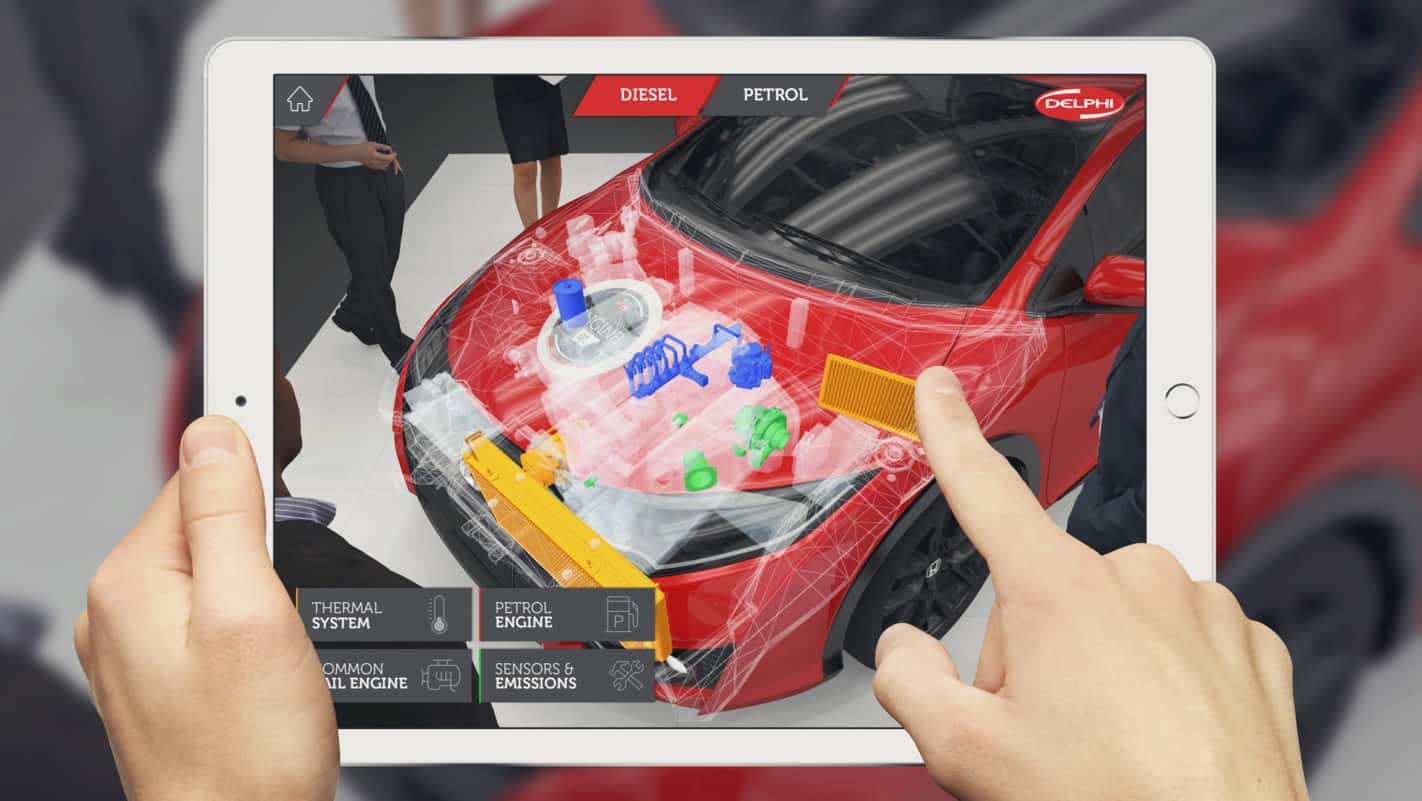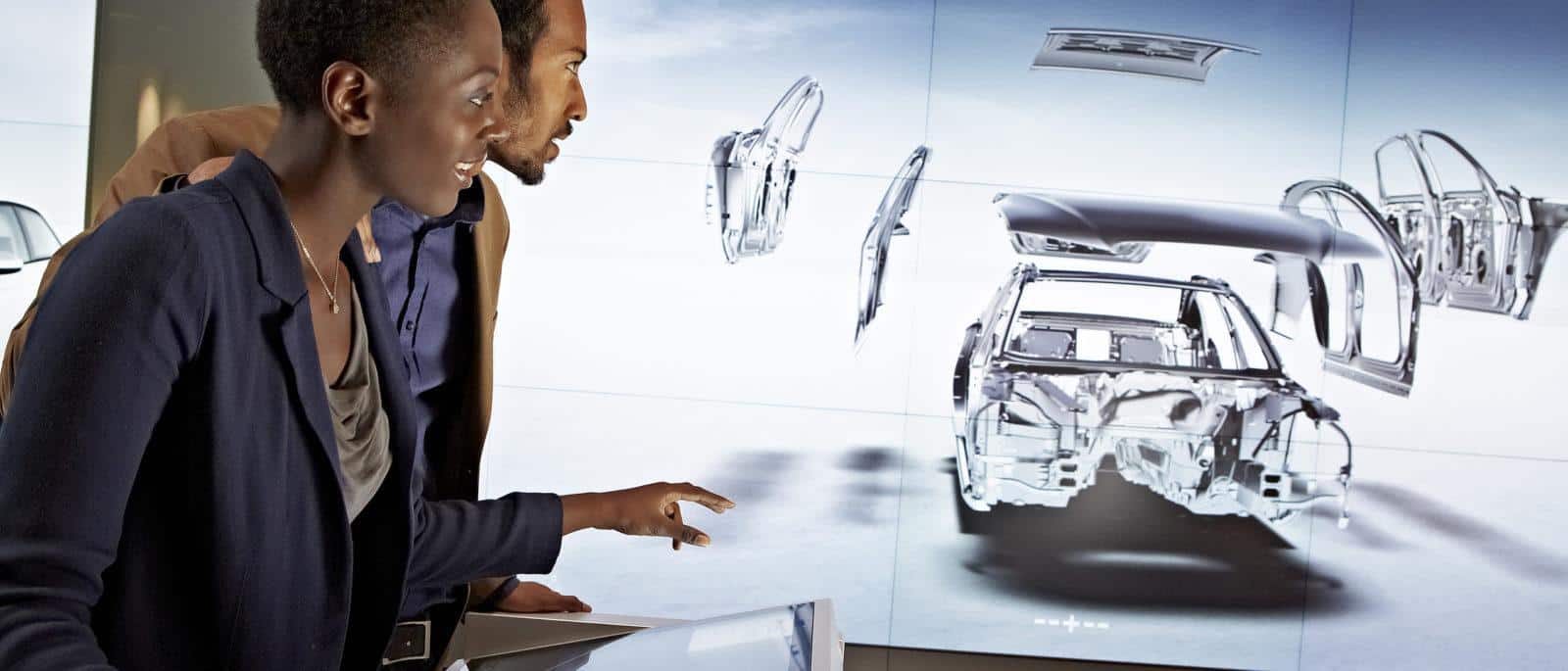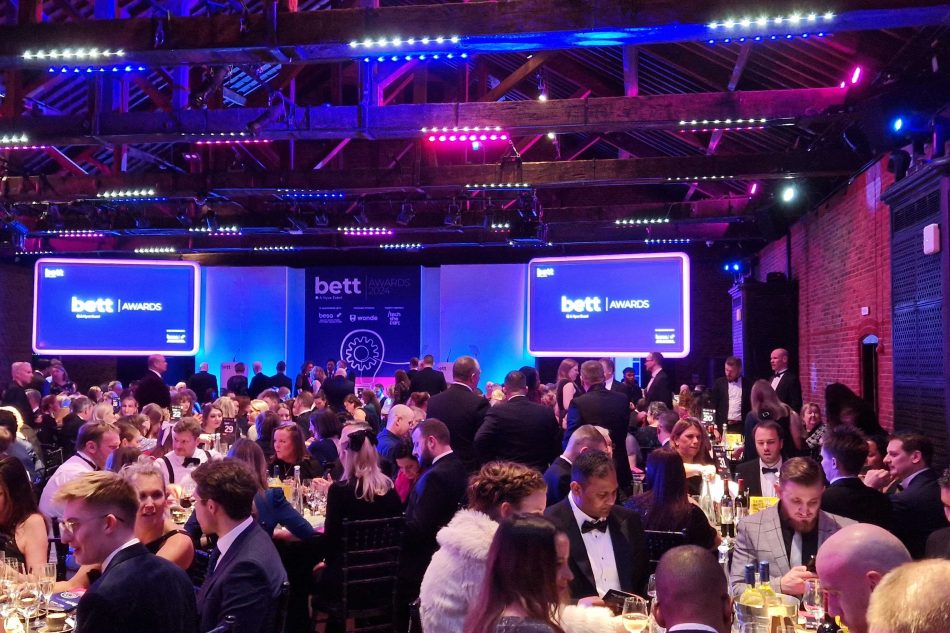
Augmented reality and the future of automotive retail
In 2019 2.9 million new vehicles were registered in the UK and, despite the strong UK market, growing political and economic uncertainty has meant that car dealerships are having to innovate to grab the attention of savvy digital consumers who have a wealth of tools at their disposal to shop around for the best deals.
With this in mind, we wanted to focus in on how AR (augmented reality) is shaping automotive retail and the car showroom by exploring 3 key areas that could provide car dealerships with that all-important competitive edge.
1. Educating customers better
Across many different industries and sectors, AR has been used as a tool to better educate customers, particularly regarding technical information. The ability to overlay technical data onto real world objects (i.e. cars) to provide customers with contextual information that they can interact with, is much more compelling as an augmented reality experience than it is through more traditional channels such as online or video.
Delphi, a leading global supplier of automotive parts, needed an interactive tool to help communicate their commitment to technology and innovation, as well as educate their customers about the finer details of their products. Working together we created an ‘x-ray car’ AR experience at the Automechanika show in Frankfurt. Visitors were able to scan a Honda Civic car on the exhibition stand and see and interact with the entire core Delphi product range fitted within the car.
Customer engagement at the event increased compared to previous shows and the AR experience is currently being used by Delphi’s sales team across Europe.

The possibilities of using AR to increase brand engagement and educate potential consumers is not limited to just AR events.
Back in 2016 Hyundai launched a unique augmented reality automotive sales tool that was developed for Australian car dealerships. The AR app, which runs on iPads, helps sales staff to demonstrate the features and performance of Hyundai’s new i30 hatchback:
“This app gives dealers the ability to demonstrate key features of the car that would be otherwise difficult to showcase within the showroom environment, particularly, without holding extensive inventory.”
Nick Cook, Hyundai Product Marketing Manager
Making the technical as accessible as possible is often a key part of the automotive sales process. Augmented reality provides a unique way for customers to see and experience technical features in a way that they will easily understand and quickly engage with.
2. Improving product experience
AR product visualisation is considered the ‘try before you buy’ for the digital age and, in the case of the automotive retail industry, 3D product visualisation with AR provides car dealerships with a unique way to showcase their car models. It enables customers to explore different specifications and configure different models, and then place and interact with their personally specced up new car at home on their drive or even in the context of the car showroom.
Using Apple’s ARKit, the Engine Creative R&D team created a car configurator app to enable users to place photorealistic 3D models of their favourite Audi in any real world environment. This means that any model in any configuration can be placed directly in front of customers.
As well as choosing their preferred colour combination, users can configure and interact with the vehicle in a number of ways including opening the doors to view inside and interacting with the light displays – all features are designed to create a rich and immersive AR experience.
Another recent example of product visualisation comes from Jaguar Land Rover, who released a new augmented reality advertisement in June. Users were able to use their smartphone camera to get themselves behind the wheel of the Range Rover Velar SUV. Rather than having to visit a showroom or get on the road, this product visualisation gave the user the experience of test driving the car from the comfort of their own home with a smartphone camera in hand.
Jaguar’s commitment to augmented reality is well documented with a number of AR projects under their belt and ongoing investment in developing AR experiences such as the Land Rover iGuide app which enables Discovery owners to explore their vehicle and understand key features using AR.

3. Driving car showroom visits and sales
AR is not only improving the consumer’s product experience but changing the way the automotive retail industry sells cars. With customers beginning their purchase journey online and with all the relevant information at their disposal, automotive retail has had to shift from a product-driven to a customer-centric sales approach to adapt to shifting customer behaviour and expectations.
This has paved the way for using augmented reality to digitise showrooms whilst also bypassing the problem of limited physical inventory as AR enables car dealers to present buyers with a complete range of models and specifications. AR has enabled car dealers to use their (often minimal) space to maximum effect.
Audi was one of the first to improve the physical car showroom experience by applying AR to Audi City, the world’s first fully digital car showroom back in 2014. The digitised showrooms provide a fully interactive retail and branding experience, driving customer engagement. On mobile devices, customers can choose and customise their own car model.
“They can change the colour, they can change the alloys, they can even hear how the cars sound”
Raju Sailopal, Head of Sales in Audi City London

Since Audi digitised their showroom, other automotive brands have used the technology to replace the conventional showroom experience. Jeep recently launched AR in over 800 stores using the Lenovo Phab2 Pro, the world’s first tango-enabled smartphone. The ultimate goal of Jeep (and other automotive brands) is clear:
“We want customers one day to be able to build a car by choosing accessories, colours or parts with their fingertips.”
Emanuele Ranieri, Head of Customer Experience for EMEA at Jeep-owner Fiat Chrysler Automobiles
Augmented reality and the future of automotive retail
It’s obvious that AR will continue to be increasingly used as a tool in the auto retail industry to improve the customer experience and, ultimately, drive sales. A recent survey from CDK Global even suggests that the technology is already close to being adopted everywhere:
“In just five years customers will expect dealers to use advanced technologies as part of the sales process. AR will become the norm, enabling customers to experience the full spectrum of products, options, and specifications anytime at the touch of a button.”
Motor Trader
Drive sales and customer engagement with AR
For more information on how to bring your automotive retail experience to life with augmented reality, please call us on 01604 453 177 or drop us an email.

